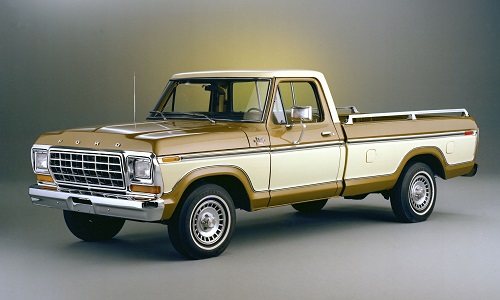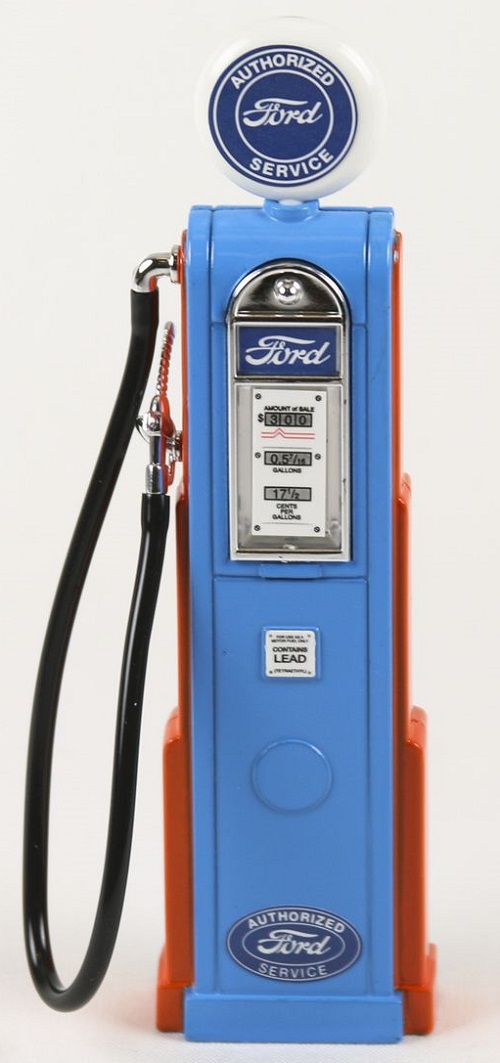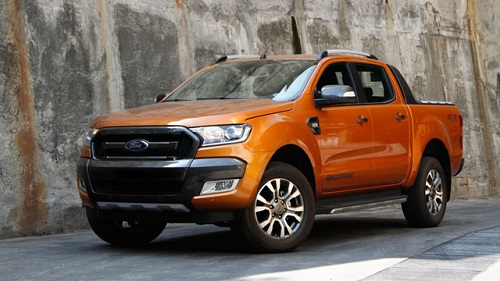SPECIAL REPORT: The Great American (Light) Truck Binge
FTE FEATURE: Is America’s Obsession with Big, Badass Trucks Going to Inadvertently Steer Drivers into a Recession-like Catastrophe?
Here’s some news that proves truck owners are stubbornly committed to their rigs: Truck sales are at an all-time high, according to data from Good Car, Bad Car. In response, OEMs like FCA and Ford are focusing their near-future on SUVs, crossovers and trucks, as exemplified by the redesigned Expedition and forthcoming Wagoneer. However, this is basically the same problem that led to the bailout problems of 2008. Ford obviously didn’t take money but was a part of the same situation. So, we wonder if the increasing concentration on truck and SUV sales will be placing domestic automakers in the same risk they faced on the eve of the recent recession. Also, if gasoline prices move back toward $4 per gallon, will U.S. truck owners be okay financially, since we all know that trucks consume more gas than cars?
Five Decades of Truck Growth

The transition away from cars in favor of trucks is well-documented and self-evident to motorists. But, the shift toward trucks and its possible risks to automakers and consumers are not well understood.
The tailwind behind light truck sales predates the last economic cycle. In 1973, cars hit their all-time peak of 11.1 million units sold. Since then, trucks as a share of total vehicle sales, have been on the rise. In 1978, trucks were pickups, and they accounted for 30 percent of sales. In 1992, the light truck segment had grown to include hot-selling SUVs like Grand Cherokee and Explorer, and they crossed 40 percent. Just six years later, they reached equilibrium with cars. By 2014, the crossover explosion was in full swing and light truck sales exceeded 10 million units for the first time, and in 2016, they made up 61 percent of new vehicle sales.
Composition of Sales
In 2003, after five robust years for the auto industry, mid- and full-size pickups combined for 17.6 percent of the market. In 2006, they commanded a similar 17.9 percent share. Ten years later, pickups were down to 15.4 percent of the market. In fact, fewer pickups were sold in 2016 than in 2003.
According to Stephanie Brinley, Senior Analyst at IHS Markit, “Pickup sales in the 2003 to 2006 period were artificially high, elevated by a buoyant economy and stimulated by high OEM incentive spending.” Buyers with limited need for a pickup entered the segment. And when auto sales rebounded, those buyers returned to other segments, leaving pickups with the moderately reduced yet broadly sustainable share they have today.
The rise of trucks is a long-term trend, but the pickup has not been the driving force in this shift for well over a decade.
Truck growth over the last 20 years has been in SUVs, and over the last decade, it has been more narrowly focused in mainstream compact crossovers. This segment expanded by over two million units between 2003 and 2016, eclipsing full-size pickups as the single largest automotive segment.
OEM Risk

Automakers closed 2006 with an unprecedented eight straight years of sales exceeding 17 million units. But the industry was on the edge of an abyss. A residential real estate bubble, tightening credit markets, increasing unemployment and rising gasoline prices combined to make the imperfect storm.
Ford, Chevrolet and Toyota are full-line brands with remarkably similar product ranges and domestic sales. And although their pre-recession offerings were close surrogates for one another, their composition of sales was not. Toyota featured the greatest concentration in SUVs, totaling 23 percent of its 2006 sales. However, due to its absence in full-size vans, limited participation in the full-size pickup market, and strength in its car offerings, Toyota had the lowest concentration of the three in light truck sales at 46 percent.
SUV sales were also robust at Chevrolet, accounting for 22 percent of sales in 2006. Ford was lighter in SUVs at 18 percent, yet arguably more balanced across vans and trucks than Chevy. But both brands were highly concentrated in trucks, 63 percent at Chevrolet versus 64 percent at Ford.
In 2003, the average price for a gallon of regular unleaded was $1.75. Over the next three years, it grew 70 percent to an inflation adjusted $3 per gallon. Nonetheless, between 2003 and 2006, truck sales maintained a steady 55 to 56 percent share, suggesting that demand for trucks is not highly correlated with prices at the pump. But subtle changes underlying the big picture were at play.
Full-size pickup sales dipped almost eight percent from 2003 to 2006, while mid-size pickup sales accelerated 20 percent. In the aggregate, the same three million pickups were sold but their composition had shifted from 80 percent full-size down to 73 percent.
Mid- and full-size SUV sales also slipped between 2003 and 2006, but mainstream compact crossovers expanded 25 percent to fill the gap and maintain the overall truck market share at 55 percent.
Gasoline reached $3.60 a gallon in 2008. And as the recession deepened in 2009, truck sales declined more rapidly than cars. Likewise, when the rebound began in 2010, truck sales recovered faster than cars, even as the price of gasoline rebounded all the way to $3.75 in 2011. High gasoline prices did not slow truck sales in the years prior to the recession, nor did they appear to be a drag on demand for trucks on the way out of the recession.
The recent recession reshuffled the 17 million unit deck. And the results appear at a glance to be the inexorable rise of trucks. A closer look reveals that full-size pickup sales have returned to a historically stable 12-13 percent share of the market while compact crossovers have taken share from compact and mid-size cars. This suggests that pickup demand is again being driven by consumer need rather than irrational exuberance.
If gasoline prices go up significantly, but all else remains constant, the impact on demand for trucks in general and for pickups in particular will be negligible. If however, a rise in gasoline prices occurs in conjunction with another major economic disruption, the impact on these brands may look familiar. The strongest inoculation against high fuel prices for every OEM is a compelling lineup of cars.
Consumer Risk
The risk to light-truck consumers posed by increasing fuel costs today is lower than it was 10 years ago. Not only has fuel economy improved across the segments that make up light trucks, but consumers are not purchasing more pickups today than they were a decade ago.
According to the Environmental Protection Agency, Ford’s sales weighted light truck fleet fuel economy improved 18.5 percent between 2006 and 2014. Additionally, Fuelly, a provider of crowd-sourced fuel economy data, reported a 25-percent improvement in fuel economy for 2016 F-150 drivers versus their 2006 counterparts. While there are numerous factors impacting fuel economy data, the positive trend is entrenched and not simply the result of more compact SUVs being mixed in.
As the table on the right illustrates, the increase in F-150 fuel economy over the last 10 years has put $60 per month back in F-150 drivers’ pockets. And if the average price of a gallon increased to $4, those same consumers would be out $20 per month versus their 2006 selves. Spending $240 more per year on fuel will be of concern for some pickup buyers, who are likely to shift to a mid-size product, as they clearly demonstrated a willingness to do between 2003 and 2006. But for those stuck in full-size trucks when the contemplated run up in fuel prices occurs, the cost will not be crippling. The greater concern in a $4-per-gallon world will be what other economic disruptions have merged to create the price spike.
Even in a high fuel-cost environment, today’s half-ton pickup buyers may select from a variety of more fuel-efficient powertrains than those available in 2006. Diesel, small displacement turbocharging, and soon at least one hybrid powertrain will alter the landscape and ensure the competitiveness of the full-size pickups. These powertrain technologies are also improving the fuel efficiency of SUVs and crossovers, further insulating consumers from the impacts of another run up in fuel process. These may not be the environmentally-friendly, zero emissions vehicles some would prefer, but American consumers have demonstrated what they want, and for the foreseeable future that will be light trucks.
Conclusion
The conventional division of cars versus light trucks is anachronistic. Today’s market is better understood through three vehicles types: cars, pickups and SUVs/crossovers. Viewed through this lens, we see that pickup sales are mature. It is in cars and crossovers where dynamic change is taking place, with the more “trucky” crossovers steadily displacing cars in the battle for market share.
Are the domestic automakers navigating into the same truck-driven ambush that caught them off balance in the last downturn? Some more than others. FCA, with its public and significant failure to build and market competitive cars, is once again at the greatest risk in a high-cost fuel environment. The competitiveness of Ford and Chevrolet in cars is up for debate, but their position relative to 2006 appears to be similar or somewhat degraded. That weakness, however, is mitigated by their strength in compact and mid-size crossovers and SUVs, which are relatively fuel efficient versus pickups.

If gasoline rises to $4 per gallon, our problems will likely go beyond expensive gas. But, if this occurs and all else holds constant, the domestic automakers will be better positioned to compete than they were in 2006. Today’s pickups use less fuel than they did 13 years ago. Moreover, the OEMs could more rapidly respond to changing demand by altering their powertrain mix than they could by developing all-new vehicles. Additionally, mid-size pickups are larger and more capable than their predecessors and they are making a comeback with Ranger, Wrangler and soon a redesigned Frontier on the way.
The most significant factor suggesting that high gasoline prices would not crush the domestics is the shift to crossovers. The Detroit Three are competitive in the various crossover/SUV segments and are more efficient than pickups and therefore less prone to downward pressure on sales in a high-cost gasoline environment.
American consumers have voted with their wallets. In ever-increasing numbers they prefer crossovers and SUVs to cars. The OEMs, both foreign and domestic, have responded by offering them what they want. Fortunately, these unibody, front-wheel-drive biased and often four-cylinder vehicles are relatively fuel friendly. They are less prone to a fuel-cost-induced catastrophic decline in sales than were the pickups and heavy body-on-frame SUVs that went before them. Both consumers and the domestic automakers are at less risk than they were a decade ago.





